
Chaozhou, alternatively Chiuchow, Chaochow or Teochew, is a city in the eastern Guangdong province of China. It borders Shantou to the south, Jieyang to the southwest, Meizhou to the northwest, the province of Fujian to the east, and the South China Sea to the southeast. It is administered as a prefecture-level city with a jurisdiction area of 3,110 km2 (1,200 sq mi) and a total population of 2,568,387. Its built-up area encompassing most of Shantou and Jieyang cities was home to 12,543,024 inhabitants on 13 local administrative areas. Along with Shantou and Jieyang, Chaozhou is a cultural center of the Chaoshan region.
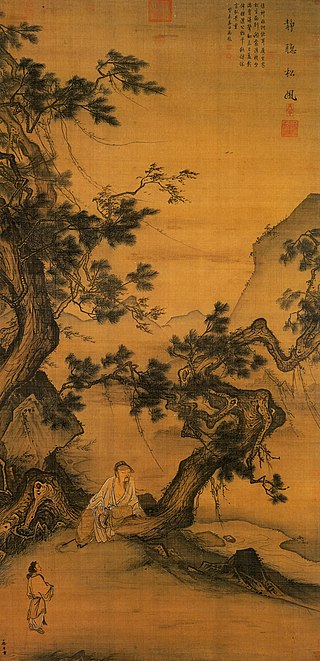
Chinese painting is one of the oldest continuous artistic traditions in the world. Painting in the traditional style is known today in Chinese as guó huà, meaning "national painting" or "native painting", as opposed to Western styles of art which became popular in China in the 20th century. It is also called danqing. Traditional painting involves essentially the same techniques as calligraphy and is done with a brush dipped in black ink or coloured pigments; oils are not used. As with calligraphy, the most popular materials on which paintings are made are paper and silk. The finished work can be mounted on scrolls, such as hanging scrolls or handscrolls. Traditional painting can also be done on album sheets, walls, lacquerware, folding screens, and other media.

Xu Beihong, also known as Ju Péon, was a Chinese painter.

The history of Asian art includes a vast range of arts from various cultures, regions, and religions across the continent of Asia. The major regions of Asia include Central, East, South, Southeast, and West Asia.
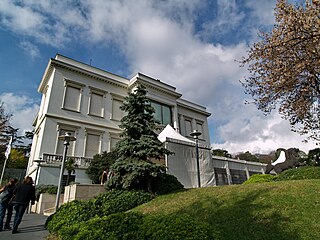
The Sabancı University Sakıp Sabancı Museum is a private fine arts museum in Istanbul, Turkey, dedicated to calligraphic art, religious and state documents, as well as paintings of the Ottoman era. The museum was founded by Sakıp Sabancı, and was opened in June 2002. Aside from permanent exhibitions, the museum also hosts national and foreign temporary exhibitions and, hosts cultural events on the weekends.

The Lalit Kala Akademi or National Academy of Art (LKA) is India's national academy of fine arts. It is an autonomous organisation, established in New Delhi in 1954 by Government of India to promote and propagate understanding of Indian art, in and outside the country.
The Ngee Ann Kongsi is a charitable foundation in Singapore and governed by the Ngee Ann Kongsi Ordinance of 1933. It is one of many Overseas Chinese Kongsi, or clan associations, that were set up by immigrants from China in the late 19th century.

The culture of Singapore has changed greatly over the millennia. Its contemporary modern culture consists of a combination of Asian and European cultures, mainly by Chinese descents, South Asian, East Asian and Eurasian influences. Singapore has been dubbed as a country where "East meets West", "Gateway to Asia" and a "Garden city".
Ong Kim Seng, was born in Singapore and has been a full-time artist since 1985. He has participated in group and solo exhibitions at Singapore and in the United States, China, United Kingdom, Japan, Australia, Belgium, Federal Republic of Germany, France, Middle East, Taiwan, Hong Kong, and the ASEAN countries.
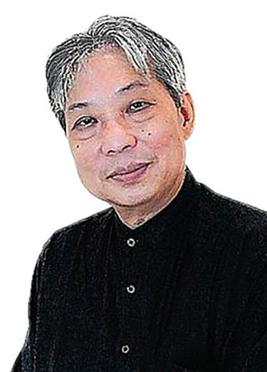
Chua Ek Kay was a Singaporean artist hailed as the "bridge between Asian and Western art" with a unique painting style using Chinese ink on paper that demonstrated an ingenious blend of traditional Chinese painting forms with Western art theories and techniques. Most of his works were themed of Chinatown street scenes, lotuses, and abstract works inspired by Australian aboriginal cave paintings.
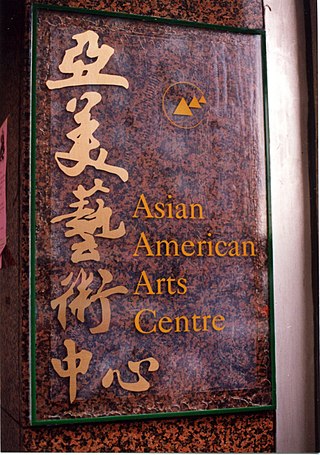
The Asian American Arts Centre (AAAC) is a non-profit organization located in the Chinatown neighborhood of Manhattan in New York City. Founded in 1974, it's one of the earliest Asian American community organizations in the United States. The Arts Centre presents the ongoing developments between contemporary Asian & Asian American art forms and Western art forms through the presentation of performance, exhibitions, and public education. AAAC's permanent collection, which it has accumulated since 1989, contains hundreds of contemporary Asian American art works and traditional/folk art pieces. The organization also has an Artists Archive which documents, preserves, and promotes the presence of Asian American visual culture in the United States since 1945. This includes the East Coast, especially the greater New York area; the West Coast; and some artists in Canada, Hawaii, and overseas. The artists include Asian Americans producing art, Asian artists who are active in the United States, and other Americans who are significantly influenced by Asia. Pan-Asian in outlook, the Arts Centre's understanding of 'Asia' encompasses traditions and influences with sources ranging from Afghanistan to Hawaii.
Teochew Poit Ip Huay Kuan is a Teochew clan association in Singapore. Poit Ip, which means eight districts in the Teochew dialect, stood for the eight Teochew districts in the province of Guangdong, China. Huay Kuan means "clan association". On 12 December 1928, a temporary committee convened a meeting at the Tuan Mong School in preparation of the formation of the Huay Kuan. On 20 March 1929, British colonial authorities exempted the Teochew Poit Ip Huay Kuan from registration, and it was formally established.
Lou Zhenggang is a prominent contemporary Chinese artist. Trained in calligraphy from an early age, she attained national fame as a child prodigy, was sent to a government-sponsored fine arts academy and trained by China's masters of calligraphy and ink painting. She won numerous competitions and exhibited both at home and abroad. At the age of 20, Lou moved to Japan, where she soon had several highly acclaimed exhibitions, wrote illustrated columns for prominent local magazines and was featured regularly on a national television program for three years. Though Lou's work is best known in China and Japan, it has been shown in Paris and New York and is held in numerous collections, both public and private. She continues to live and work in Tokyo.
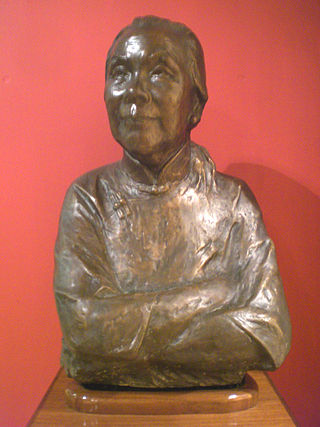
Fang Zhaoling, also known as Lydia Fong, was a Chinese painter and calligrapher.
Yao Youxin (1935–1996) was a Chinese-American painter and professor of fine arts.

The visual arts are art forms such as painting, drawing, printmaking, sculpture, ceramics, photography, video, filmmaking, comics, design, crafts, and architecture. Many artistic disciplines, such as performing arts, conceptual art, and textile arts, also involve aspects of the visual arts as well as arts of other types. Also included within the visual arts are the applied arts, such as industrial design, graphic design, fashion design, interior design, and decorative art.

Cheng Haw-Chien was born in 1948 in Penang, Malaysia. He studied the Lingnan style of painting, which fuses elements of Western and Japanese realism with Chinese ink painting on rice paper. He learned Chinese brush painting and western art forms enthusiastically when he was an adolescent. His interest was furthered when he continued his academic studies in Taiwan and Hong Kong after he graduated from secondary school. Thereon, he sought to refine his artistic skills under the guidance of many eminent masters. Former Principal of the Central Academy of Art and President of Central Research Academy of Art, Malaysia. He is currently a visiting professor of Renmin University of China, Ningbo University, Changshu University of Technology, and Handan College, and a life-long consultant of Ningbo Art Museum.

The artistic heritage of Taiwan is extremely diverse with multiple major influences and periods. Today Taiwan is one of the world's most significant art markets.
Goh Beng Kwan is a pioneering Singaporean modern artist, known for his abstract collages that incorporate materials such as fabric, nails, and paper, exploring issues around cultural representation, urbanism, and identity.

Wong Keen is a Singaporean painter who was primarily trained in New York. He is known for being one of the first Singaporean artists to be educated in the United States and for his syncretic body of work that melds together the sensibilities of Chinese literati painting and the New York School. His practice, unusual for his generation, has led to him being described as "Singapore's first abstract expressionist". From 1969 to 1996, Wong also founded and operated Keen Gallery in New York, a framing studio and exhibition space.













